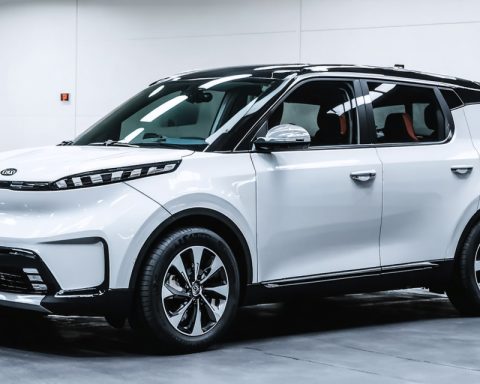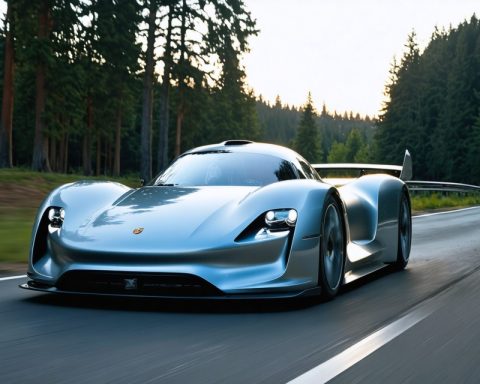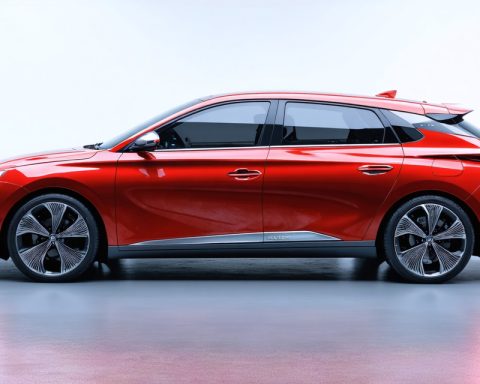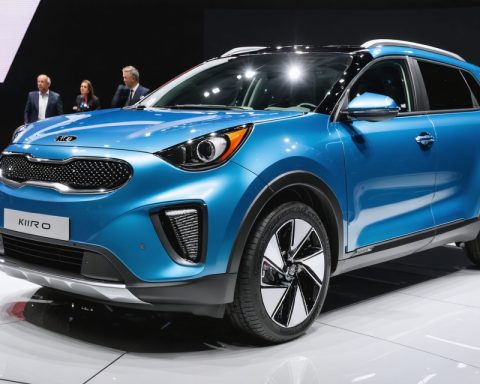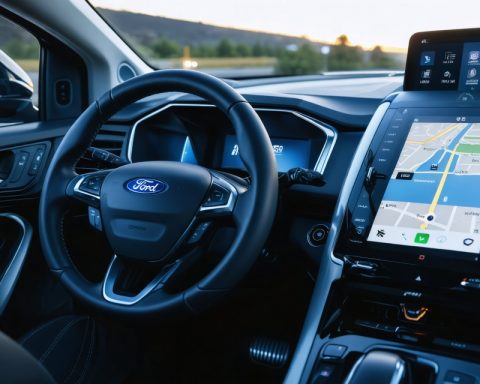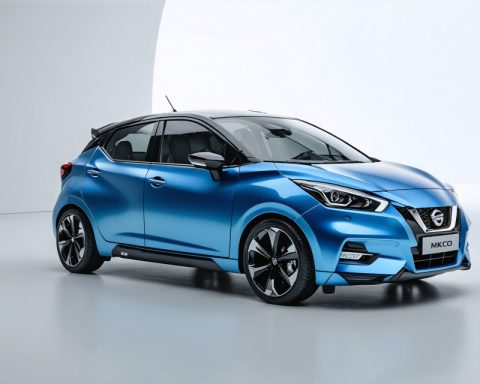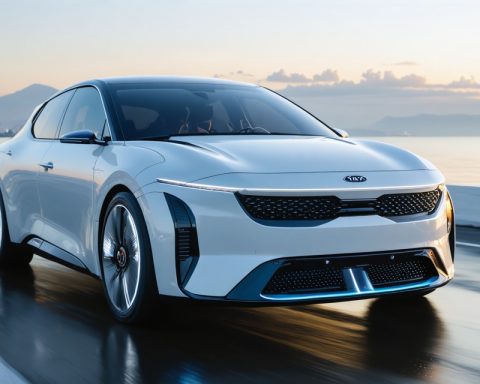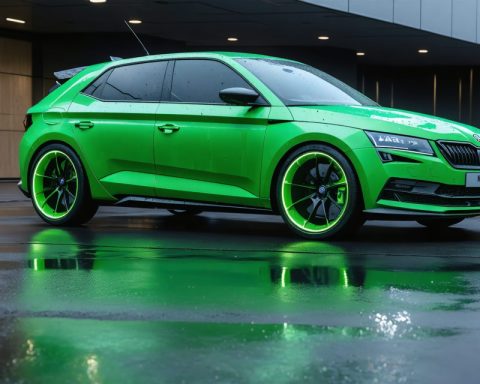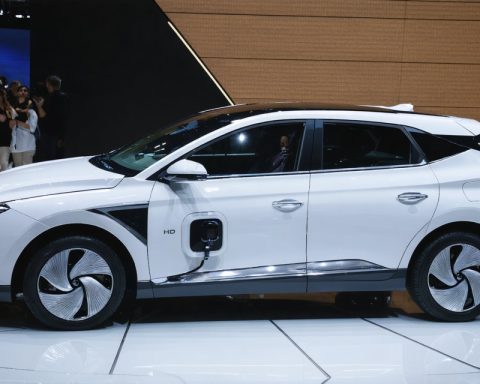- Tesla faces increasing competition and evolving consumer trust, affecting demand for older models in Australia.
- Newer Model Y vehicles are set to debut, but previous models remain unsold due to changing market dynamics.
- Unpredictable pricing decisions by Tesla have led to skepticism and erosion of consumers’ trust.
- Australia’s charging infrastructure improvements are ongoing, but challenges remain for long-distance EV travel.
- Elon Musk’s political engagements create complexities in Tesla’s brand perception, affecting potential buyers’ decisions.
- Tesla must address trust issues, competition, and infrastructure challenges to sustain its market presence in Australia.
The scorching sun of Perth illuminates a peculiar sight: rows of glistening new Teslas lined up, waiting for their drivers. This spectacle is more than a photograph; it’s a snapshot of a dilemma Tesla faces in the ever-evolving electric vehicle market in Australia. As newer models race to the continent, these older Teslas are idling, collecting dust instead of miles.
In the fast lane of innovation, even the brightest brands can stall. Tesla, once the Australian darling of electric vehicles, now finds its shine slightly dulled by a series of unforeseen hurdles. Under the stewardship of Elon Musk, Tesla’s dynamic journey intertwines technological prowess with his polarizing political ventures in the United States, offering a theater of contrasts that impacts potential buyers.
Stagnancy in the Yard
As fresh versions of the popular Model Y prepare to make their grand entrance, their predecessors stand unwelcome. The deluge of unsold vehicles stems from escalating competition and evolving consumer trust, a reality underscored by Paul Maric of CarExpert. The variety in EV choices today sees consumers gravitating towards alternatives that offer similar technology at friendlier prices.
The allure of early adoption has met its downturn. Enthusiasts who once splurged on the latest Tesla now face a conundrum: suspecting price slashes, many are hesitant to invest anew. This erosion of trust in the brand’s pricing decisions has intensified skepticism, especially when customers see depreciation accelerated by significant markdowns on newer models.
Crossover Choices
Navigating Australia’s sprawling landscape in an electric car remains a task fraught with logistical hurdles. Charging infrastructure, while improving, tests the patience of those road-tripping across the vast outback. Many Australians, lured back to hybrids, seek the comfort of knowing a fuel station is never too far away—contrast this with the nerve-wracking wait at rural charging nodes, sometimes marred by lengthy queues.
The Political Ripple
Elon Musk’s forays into the political arena do not escape either scrutiny or consequence. His involvement with the Department of Government Efficiency portrays a leader with ambitions that stretch beyond just wheels and batteries. Some potential buyers perceive his cross-border political theatrics as a distraction, clouding their purchasing decisions. The synthesis of Musk’s strategic brilliance with his political narratives adds a layer of contradiction, impacting Tesla’s market perception.
In the roaring silence of a Perth car park, where dreams once electrified, Tesla finds itself at a pivotal crossroads. The shifting tides of trust, technological rivalry, and infrastructural hurdles demand more than mere innovation; they demand a recalibration of approach. As Tesla navigates these challenges, the future of its journey in Australia might just hinge on how it reimagines trust and connectivity—both on and beyond the road.
Why Tesla’s Struggles in Australia Reflect Broader Challenges in the EV Market
Understanding Tesla’s Current Market Scenario in Australia
The situation unfolding in Perth, with rows of unsold Tesla vehicles, is emblematic of deeper issues within the electric vehicle (EV) market in Australia. While Tesla spearheaded the electric car revolution, it now finds itself navigating complex challenges as the landscape evolves.
Key Factors Behind Tesla’s Predicament
1. Escalating Competition
Tesla was once the lone wolf in the EV arena, but now it faces stiff competition. Brands like Hyundai, Kia, and BYD are launching their models with competitive features at lower price points. According to a report from IEA, the global EV market is growing, with more automakers expanding their EV line-up, providing customers with a wider array of choices that challenge Tesla’s market share.
2. Pricing and Depreciation Concerns
Frequent price cuts on Tesla’s vehicles have led to significant depreciation, impacting consumer confidence. Buyers are increasingly wary of purchasing an EV at its current price, only to see its value plummet within weeks due to sudden markdowns.
3. Charging Infrastructure
Despite improvements, Australia’s charging network is still fledgling compared to other countries. Long-distance travel in an EV remains daunting, with sparse charging stations outside urban centers, as noted in a report by Energy.gov.au. This has steered some consumers back to hybrid models.
4. The Musk Factor
Elon Musk’s controversial political involvements add another layer of complexity. His actions affect Tesla’s brand image, highlighting the delicate balance between leadership and public perception.
Navigating the Challenges
How-To Steps & Life Hacks for Prospective Tesla Buyers:
– Research Alternatives: Compare Tesla models with competitors for features and pricing.
– Monitor Price Changes: Stay informed about potential pricing adjustments to avoid buying at a peak.
– Plan Routes Efficiently: Use apps like PlugShare to pinpoint accessible charging stations during long trips.
– Consider Resale Value: Understand the depreciation trends to make an informed decision about investment and resale.
Real-World Use Cases
While Tesla’s technological innovations—like Autopilot and Supercharger networks—are often industry-leading, practical applications for Australian drivers include urban commuting where Tesla excels with its low running costs and high efficiency.
Predictions for Tesla in Australia
With the rise of EV adoption and government incentives, the market is poised for growth. However, Tesla’s success will depend on its ability to align pricing strategies, expand the charging network, and maintain a positive brand image amidst growing competition. According to industry forecasts, EV sales in Australia could triple by 2030 if infrastructure and market dynamics evolve favorably.
Conclusion: Actionable Recommendations for Consumers
– Leverage Government Incentives: Take advantage of rebates and incentives for EV purchases to offset costs.
– Assess Long-Term Benefits: Analyze total cost of ownership, including savings on fuel and maintenance.
– Stay Updated: Follow industry trends and updates directly from Tesla for potential innovations and price modifications.
For more insights into the future of electric vehicles, explore the CarAdvice website. Stay informed to make savvy choices in the evolving landscape of electric mobility.



